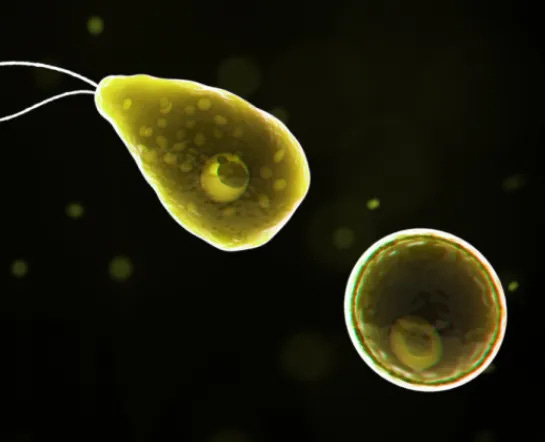Officials in the northeastern Brazilian state of Ceará report laboratory testing has confirmed that the baby who died from meningoencephalitis in September was infected by the “brain-eating amoeba”, Naegleria fowleri .
The 15-month-old child lived in a rural settlement in the city of Caucaia, in the metropolitan region of Fortaleza. She died in September, a week after beginning to show signs of fever, irritation and vomiting, which quickly progressed to neurological symptoms. Autopsy examinations confirmed the presence of the parasite.
The Ceará State Health Department concludes the child was infected by water from the reservoir that supplies the settlement where the family lives.
"Upon learning that the child had never bathed in the reservoir, the first hypothesis was that she acquired the amoeba while bathing at home. An investigation was carried out and we identified that the water that supplied the house came from the reservoir and had undergone treatment, but it was not adequate," explained the executive secretary of Health Surveillance of Ceará, Antônio Lima Neto.
The state's Center for Strategic Information on Health Surveillance then tested the water stored in the house's cistern and confirmed the presence of the parasite. After that, it recommended disinfecting the reservoir. "They also did a retrospective analysis in search of other similar cases in the area, but found none," added the executive secretary.
This is the first case confirmed by tests in Brazil, but there is a report of another patient who also died of amoebic meningoencephalitis in São Paulo, in 1975.
Naegleria fowleri is a microscopic amoeba which is a single-celled living organism. It can cause a rare and devastating infection of the brain called primary amebic meningoencephalitis (PAM). The amoeba is commonly found in warm freshwater such as lakes, rivers, ponds and canals.
Infections can happen when contaminated water enters the body through the nose. Once the amoeba enters the nose, it travels to the brain where it causes PAM (which destroys brain tissue) and is usually fatal. Infections usually occur when it is hot for prolonged periods of time, which results in higher water temperatures and lower water levels.
Naegleria fowleri infections are rare. Most infections occur from exposure to contaminated recreational water. Cases due to the use of neti pots and the practice of ablution have been documented.
The practice of ablution is included in Yogic, Ayurvedic, and Islamic traditions. Within the Islamic faith, ritual nasal rinsing is included in a cleansing process called “wudu” or “ablution.” It is usually performed several times a day in preparation for prayer, according to the Centers for Disease Control and Prevention.
You cannot be infected with Naegleria fowleri by drinking contaminated water and the amoeba is not found in salt water.
Initial symptoms of PAM usually start within 1 to 7 days after infection. The initial symptoms may include headache, fever, nausea, or vomiting. Other symptoms can include stiff neck, confusion, loss of balance, seizures, and hallucinations. After the start of symptoms, the disease progresses rapidly.





